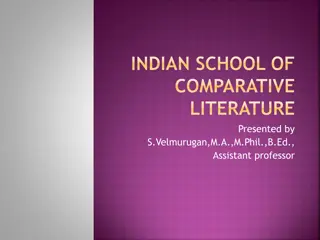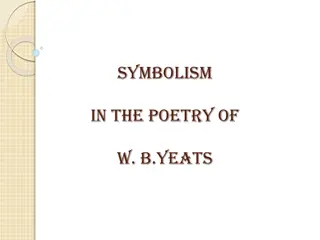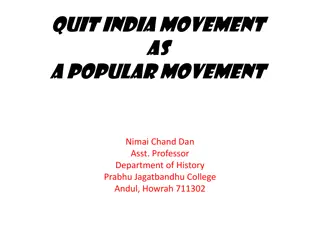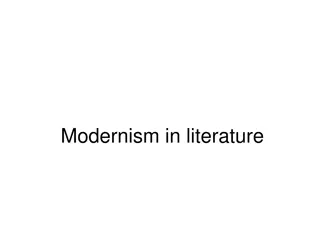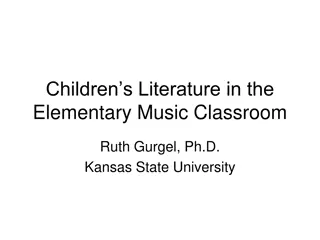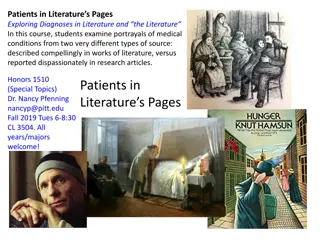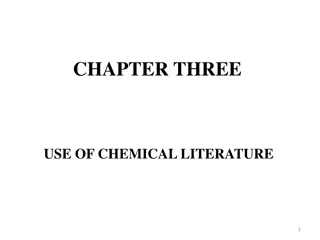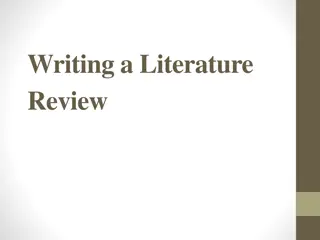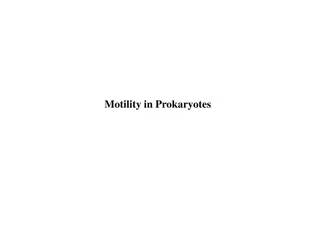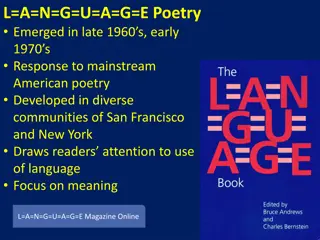Understanding the Symbolist Movement in Literature
The Symbolist Movement in literature emerged in France in the 1850s, lasting till 1900, influencing 20th-century arts and bridging Realism to Modernism. Symbolists aimed to convey personal, dream-like states with metaphorical language, challenging positivism and realism. Stylistically, they emphasized language's musicality and experimented with free verse. Influenced by figures like Baudelaire, French Symbolism impacted global literature, inspiring movements in Russia and beyond.
Download Presentation

Please find below an Image/Link to download the presentation.
The content on the website is provided AS IS for your information and personal use only. It may not be sold, licensed, or shared on other websites without obtaining consent from the author. Download presentation by click this link. If you encounter any issues during the download, it is possible that the publisher has removed the file from their server.
E N D
Presentation Transcript
The Symbolist Movement Amjed L. Jabbar Ph.D. in English Poetry
The Symbolist Movement The symbolist movement in literature originated during the 1850s in France and lasted until about 1900. Symbolism exerted a profound influence on twentieth-century literature, bridging the transition from Realism to Modernism. Symbolism also exerted a strong influence on the arts, including theater, painting, and music.
The symbolists sought to convey very personal, irrational, and dream-like states of consciousness, relying heavily on metaphorical language to approximate, or symbolize, an eternal essence of being that, they believed, was abstracted from the scope of the fivesenses. These literary ideals developed as a reaction against the dominance of positivism, which emphasized rational thought, objectivity, and scientific method. Symbolism also represented a reaction against Realism and Naturalism in literature, which sought to accurately represent the external world of nature and human society through descriptions of objectivereality.
Stylistically, the symbolists emphasized the inherent musicality of language, developed the use of verse libre (free verse), and modernized the existing form of the prose poem. The symbolists were greatly influenced by the poetry of Charles Baudelaire, whose Les fleurs du mal (1857; Flowers of Evil) embodied many of their literary ideals. In addition to Baudelaire, the central figures of French Symbolism are the poets Stephane Mallarme, Paul Verlaine, and Arthur Rimbaud.
French Symbolism affected international literature of the nineteenth and twentieth centuries, in particular, inspiring the Russian symbolist movement, which developed in the 1880s. The literature of Germany, Great Britain, Japan, the United States, and Turkey was also influenced by Symbolism. Though poetry dominated the symbolist movement, great works of fiction and drama were also written by adherents of Symbolism.
1. The Inner Life of the Individual The symbolist writers were concerned with expressing various elements of the internal life of the individual. They focused on subjective mental impressions, internal moods, delicate emotional states, and spiritual sentiments in reaction against the nineteenth-century focus on objective, external, concrete realities as perceived through rational scientific methods. Their use of imagery often exemplifies states of mind, the imagination, the human psyche, and dreams. Huysmans s symbolist novel Against the Grain, for example, concerns a man who isolates himself in a country house, avoiding contact with other people; the focus of the novel is thus on the detailed subjective perceptions of the hypersensitive protagonist within an isolated poems, particularly those of Rimbaud, evoke the inner world of the child, capturing Childhood impressions, perceptions, and flights of imagination. environment. Many symbolist
2. The Journey Many metaphors for internal explorations into the inner consciousness of the individual. Baudelaire s poem Le Voyage ( The Voyage ) describes a journey as a symbol of the quest for meaning and satisfaction in life. Rimbaud, who wrote many of his major poems while traveling with Verlaine, often focuses on symbolic journeys in his poetry, frequently describing travel as a metaphor for a quest into the imagination. For example, Le Bateau ivre ( The Drunken Boat ), one of Rimbaud s most famous poems, narrates a voyage by boat as a metaphor for an internal voyage into the mind of the individual. Verlaine also wrote a number of poems based on his travels with Rimbaud. symbolist writers describe various journeys, voyages, or quests as
3.Sensual andSpiritual Love The major symbolist poets were men, and many of their poems explore the tension in their lives between the sensual love of women and the spiritual idealization of women. These themes are addressed in the first section of Baudelaire s Flowers of Evil, wherein three cycles of love poetry are associated with three different women with whom Baudelaire was involved during his life. Baudelaire s poem The Head of Hair focuses on the sensuality of a woman s hair. The symbolist poets also strove for the realization of spiritual ideals through their love poetry. They considered beauty to be an abstract spiritual ideal that can only be hinted at through the presence of physical beauty. Mallarme described this concept as the ideal flower that does not exist in any real bouquet.
4. Religion andSpirituality Symbolist literature is oftenpreoccupiedwithspiritual explorationandreligious questions. Symbolist writers developed religious themes in a variety of ways. Much of Baudelaire s poetry explores the Catholic concept of sin and the figure of Satan. The section of Flowers of Evil entitled Revolt focuses on Baudelaire s struggles with the allure of Satanism. Rimbaud, on the other hand, offers harsh criticism of traditional religious beliefs throughout his writing, while striving to express spiritual ideals. Verlaine, who experienced a religious awakening while in prison, wrote poetry expressing the Catholic faith in his volume Wisdom. Blok is noted for his verse ballad The Twelve, in which the exploits ofaband ofrevolutionaryrebels aredescribed as aChristian parable.
5.Urban Life Modern urban life is an important element and central theme of symbolist poetry that inaugurated the transition to modern literature in the twentieth century. Baudelaire, in his Parisian Tableaus, a section of Flowers of Evil, wrote some of the first poetry to depict nineteenth- centuryurbanlandscapes andurbansqualor. His famouspoem The Swan expresses feelings ofalienation evoked by life inthe moderncity.
STYLE 1. FreeVerse Free Verse or Vers libre wasdeveloped by the symbolist poets as a form of verse liberated from the traditional formal requirements of French poetry, such as meter and rhyme. The symbolists felt the formal qualities of a poem should emerge from its content, rather than being imposed upon it by conventional rules. Free verse poetry thus tends to be structured according to the rhythms symbolist poets Jules Laforgue (1860 1887) and Gustave Kahn (1859 1936) were the first to develop free verse, which they began to use in the 1880s. Due to the influence of symbolist poetry, free verse came to characterize modern poetry in the twentieth century. Early English-language poets who usedfreeverse includeT.S. Eliot andEzraPound. of everyday speech. French
2. Musicality of Language Symbolist writers were particularly interested in bringing out the musical qualities of language. They developed works of lyrical beauty in which language was orchestrated with image to create a symphony of mood and suggestion. Verlaine and Mallarme are particularly esteemed for the musical qualities of theirpoetry. Blokbroughtmusicality to Russianverse inhis ballad The Twelve. In drama, the plays of Maeterlinck are notable for the musical qualities of the dialogue.
3. Mood The symbolists focused on evoking a strong sense of mood through the use of language. Moods such as longing, regret, a sense of loss, and reverie (dream) are often expressed in symbolist literature. The poets strove to evoke specific moods through the expression of indirect internal states of mind. In symbolist fiction and drama, plot is less important than the overall mood or atmosphere that is created.
4.The FairyTale A number of symbolist writers drew from traditional folktales and fairytales in their works of poetry, fiction, and drama. Maeterlinck, for example, in his plays The Princess Maleine and Pelleas and Melisande, drew from a variety of popular folktales to create dramas set in traditional fairytale settings and featuring characters from folk literature. Rimbaud drew extensively on the fairytale in experimental narrative poemsthat transform this traditional genre.



